Top 15 Peculiar Phobias
A phobia is a type of anxiety condition characterized by a persistent and overwhelming dread of a certain object or circumstance. Phobias frequently cause a ... read more...sudden onset of fear and last for longer than six months. Those affected will go to tremendous efforts to avoid the circumstance or item, even if the risk is larger than the actual threat. Phobias create severe suffering and frequently drive a person to avoid the source of their fear or suffer from great anxiety when confronted with it. Anyone suffering from a phobia that is interfering with their daily life should consider seeking professional help since the outcomes of expert therapy are usually beneficial. There are various phobias. Now, let's discover some peculiar phobias that you may not know.
-
It is frequently associated with a more widespread fear of choking (pseudodysphagia) or of sticky textures, although it can also arise on its own. It is fairly unusual to have many phobias or to misdiagnose your problem without expert assistance. Arachibutyrophobia, like all phobias, varies in severity from person to person. Some people, for example, can eat little amounts of peanut butter, such as as a dip for vegetables, but others are terrified to eat peanut butter at all. Some people are afraid of other peanut items, such as peanut butter ice cream and peanut sauces.
While everyone has experienced the phenomena at some time, persons suffering with arachibutyrophobia are terrified of it. Arachibutyrophobia varies in intensity from person to person. Some people with this illness may be able to eat modest amounts of peanut butter, while others will avoid peanut butter or anything with a similar consistency entirely. Arachibutyrophobia is an uncommon phobia that can develop from a larger fear of sticky substances or choking. It might also be the result of an unpleasant experience with peanut butter, such as choking on it or being allergic to it.
Choking on peanut butter is actually quite common. In fact, according to a report on adults and children with developmental disabilities in New Jersey, sandwiches were the leading cause of choking incidents, with a peanut butter and jelly sandwich involved in the majority of cases. Arachibutyrophobia is a particular phobia that is highly curable using cognitive behavioral therapy approaches. This style of treatment focuses on helping you overcome your concerns by teaching you new patterns of behavior and thought.
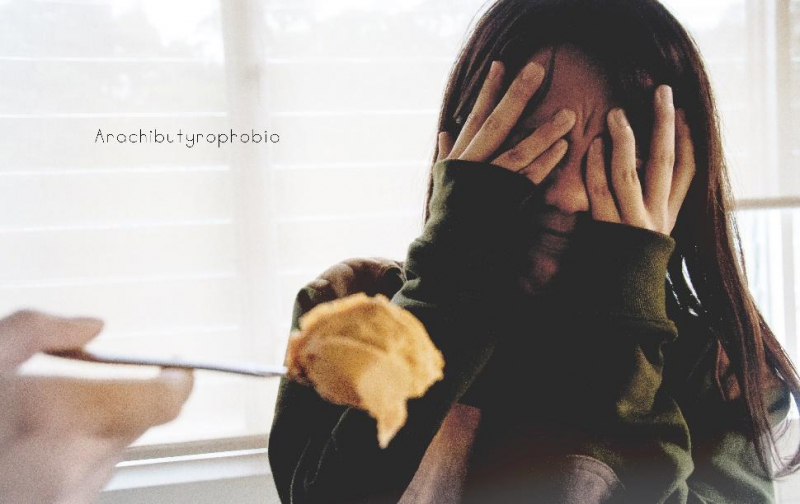
rayanworld.com 
rayanworld.com -
Horse phobia, also known as equinophobia or hippophobia, is a psychological fear of horses. Equinophobia is derived from the Greek word φόβoς (phóbos), meaning "fear" and the Latin word equus, meaning "horse". The name hippophobia is derived from the Greek word phóbos, with the prefix (hppos) taken from the Greek word for horse. Equinophobic people may be afraid of other hoofed animals, such as donkeys and mules. Freud's psychoanalytic study of Little Hans has an example of the fear.
This fear may have developed as a result of negative encounters with horses as a youngster. A fall from a horse can also cause equinophobia (An infamous example is when Christopher Reeve, an actor known for playing Superman, fell from a horse, broke his neck, and was paralyzed from the neck down for the rest of his life). In many situations, people begin to avoid horses out of fear, which progresses to a major phobia. A mere dread of the animal itself might also induce the phobia. The imposing height and weight of a horse, as well as its enormous teeth, may frighten some individuals, particularly youngsters. Fears may be exacerbated by negative media depictions of horses and stallions.
There are several therapy options accessible for persons suffering from it. Cognitive behavioral therapy is one type of therapy for persons who have phobias. It focuses on fears and the reasons for them. It attempts to alter and challenge the cognitive processes that underpin fear. It has been proven in studies to be useful in treating equinophobia. Convincing the patient that horses are not natural hazards to people and that humans have historically been predators of horses can be beneficial. Wild horses were an important source of food for people throughout the Paleolithic period. Despite a papal prohibition on horse meat in 732, many sections of Europe continued to consume it throughout the Middle Ages and into the modern day.
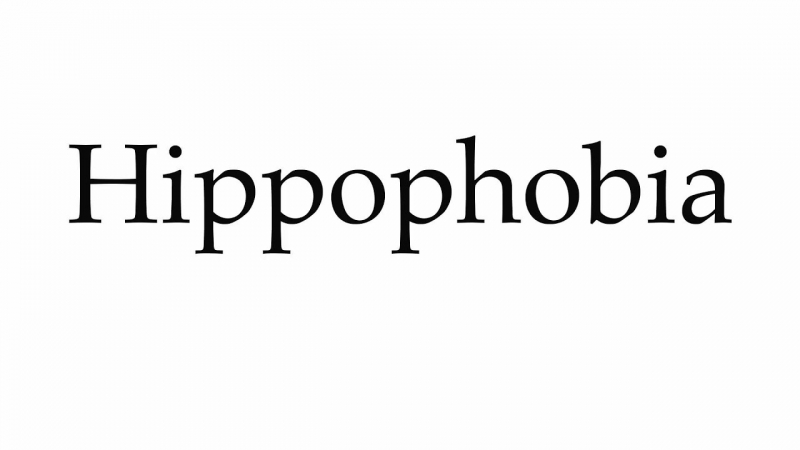
horseycounsel.com 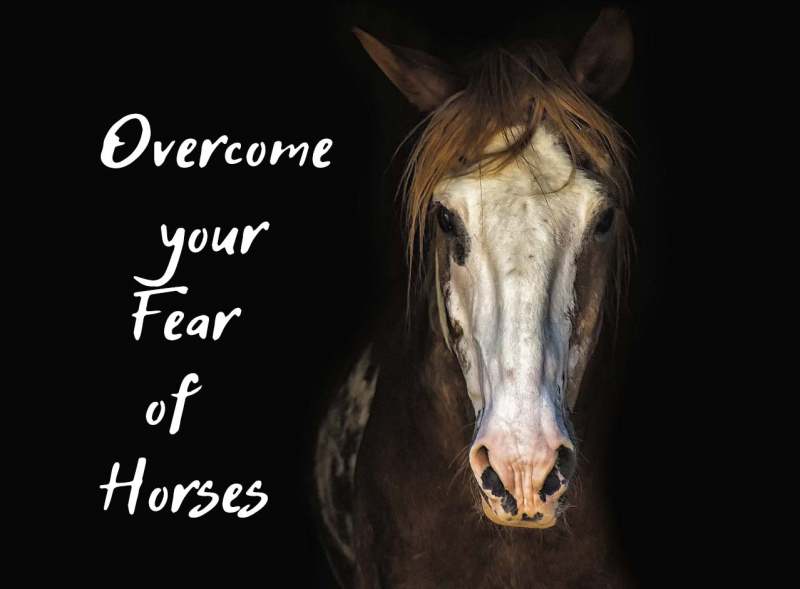
horseycounsel.com -
Anthophobia is a phobia characterized by a persistent and severe dread of flowers. "People who suffer with this may dread all flowers or just some types of flowers", explains Sanam Hafeez, Psy.D., a neuropsychologist and Columbia University faculty member. Phobias can appear in a number of forms, but the most common is a persistent, unreasonable, and excessive dread of a person, circumstance, animal, item, or, as in anthophobia, flowers. These worries are frequently unreasonable, which qualifies them as phobias.
Anthophobia, like other phobias, is generally triggered by a painful incident or person involving flowers. When it comes to experiences, someone may acquire anthophobia after experiencing numerous unfavorable occurrences associated to flowers, such as a bee or wasp bite, especially if the individual is allergic to the bug. When this occurs, the event has the potential to generate negative thought patterns in the brain. Another probable explanation is the link of flowers with loss. Another person or pet may be affected by this loss. If flowers were used as part of the mourning process, you may acquire a strong aversion to them after suffering loss-related pain. Anthophobia needs to be diagnosed by a trained mental health professional who can also develop a treatment plan by evaluating the intensity of the fear and the adverse effects the phobia has on your everyday life.
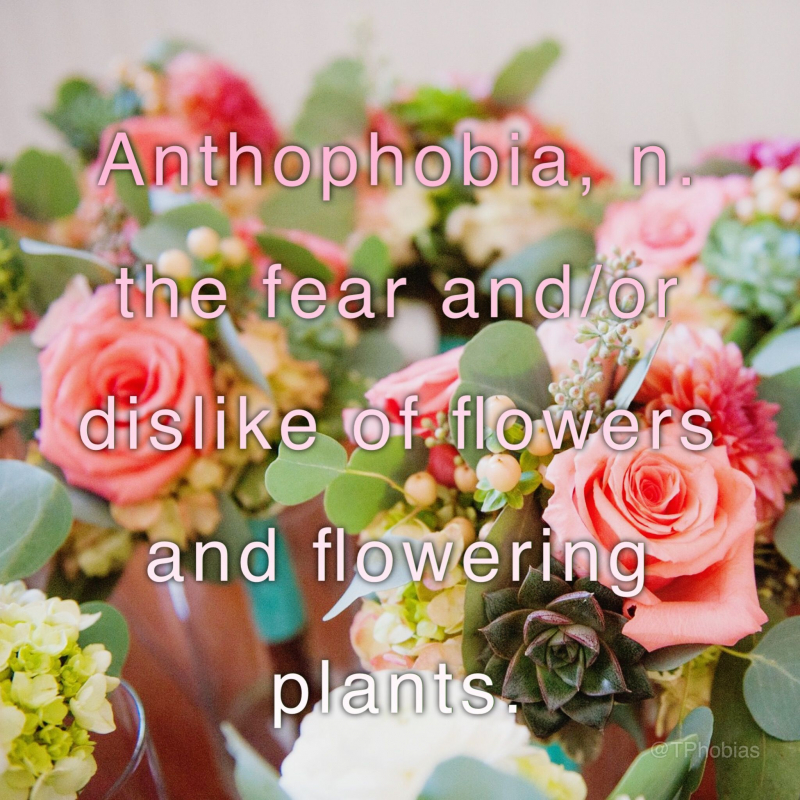
flickr.com 
pinterest -
The fear of vegetables is known as lachanophobia. A phobic individual may have been compelled to eat vegetables as a child, even if he or she disliked the flavor, and may have even been punished for not eating vegetables. Some may have seen vegetables growing in the garden and seen that some of the leaves had caterpillars, worms, or even insects on them, and they are afraid that if they eat veggies, they will eat one of these creepy, crawly animals. Others may be concerned that if they unintentionally ingest a vegetable seed, it may develop inside them. Many Autistics have sensory concerns with vegetables.
Lachanophobes frequently avoid areas where vegetables are present, such includes restaurants and grocery stores. It can sometimes extend to the point where they shun dishes containing vegetables, such as pizza with tomatoes. Shortness of breath, tremors, sobbing, shouting, fainting, elevated heart rate, raised body temperature, lack of control, and the need to leave are all symptoms of lachanophobia. Behavioral therapy and anti-anxiety drugs are commonly used to treat lachanophobia, although self-help should be explored first.
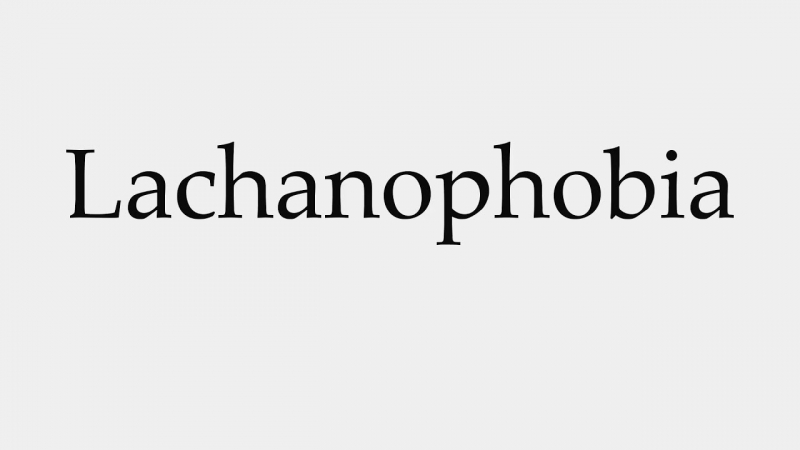
iStock 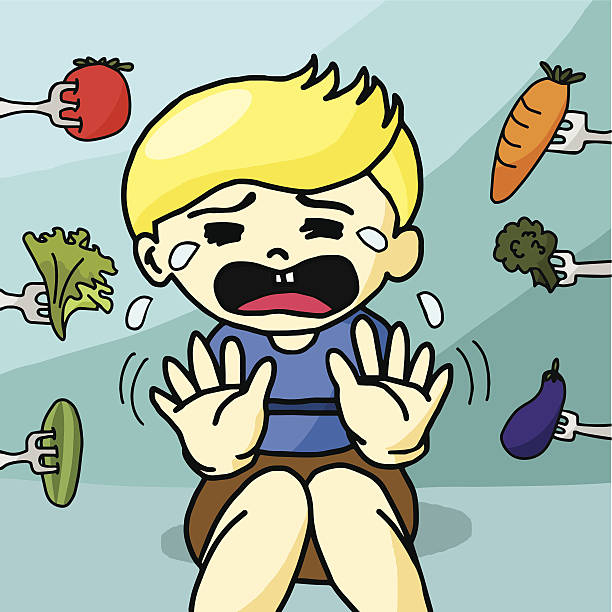
iStock -
The fear of extended delays is known as macrophobia. Someone suffering with this illness may experience severe anxiety when waiting in line or on hold on the phone. Their terror is completely out of touch with reality, and they may struggle to cope with the powerful movements associated with macrophobia.
They may recognize that their dread of long waits is illogical, but in the midst of an anxiety-inducing circumstance or a full-fledged panic attack, they are frequently unable to think rationally enough to explain their way out of their worry. This might be a significant component in why they are experiencing so much mental suffering.
The overwhelming terror that a person suffering with macrophobia would feel may impact some day-to-day life decisions. For example, someone suffering from macrophobia may purposefully opt to acquire groceries at midnight rather than a much more convenient hour to avoid having to wait in a big checkout queue. They may also find it excruciatingly unpleasant to visit restaurants, amusement parks, or other locations where you must normally wait for a pretty lengthy amount of time.
Depending on the intensity of their symptoms, someone suffering with macrophobia may find themselves staying at home more than they would want. They could do this to "avoid" whatever causes them concern. They may believe that if they stay at home or avoid situations that require them to wait, they would experience less anxiety. Though this may succeed in the short term, it will just serve to strengthen their extreme anxieties. As a result, their macrophobia will increase in the long run.

pinterest.com 
pinterest.com -
The fear of bats is known as chiroptophobia. It is one of the many animal phobias that cause anxiety without requiring direct contact with the animal. A visual stimulus from television or an indirect stimulus, such as when the bat is mentioned in a discussion, can sometimes be enough to cause the individual suffering from the phobia to get unwell. Other animal fears include snakes, rats, and spiders. Fear of bats is equally widespread. You have to consider it a very specific species, a mammal with wings, with motions that might arise unexpectedly and are also tied to the darkness of the night.
The most difficult difficulty with bats is exactly the inability to anticipate their movements, their unexpected presence in the middle of the night, because even those who suffer from chiroptophobia are aware that an encounter with this species poses no threat to their bodily integrity. Bats are not hazardous and do not attack, yet this does not prevent the phobia from developing.
Chiroptophobia, like any other phobia, causes anxiety. The stimulus is a live bat, and the response is a rising discomfort immersed in panic, beginning with nervous agitation, sweating, palpitations, tingling in the extremities, and trouble breathing. It is impossible to predict whether these sensations will diminish when the stimulus fades or will persist until an anxiety or panic attack occurs. It is dependent on the individual and the scenario. But how many times can you collide with a bat? Of course, it also depends. The most essential thing is to recognize that you have a phobic disorder and that you must find a way to overcome it. It makes no difference if it does not appear to be restrictive at first or if it does not diminish one's quality of life, because a phobic disorder will always worsen.
It makes no difference if the bat is not a common stimulus or that anxiety attacks do not occur on a regular basis. Any phobia is a symptom of an anxiety illness, which can worsen the situation and also promotes the development of new phobias, to other animals, things, or circumstances. Regardless of what each individual can do on their own to face their anxieties, phobias are overcome with expert assistance. As a result, when treating chiroptophobia, psychological treatment is crucial. Professionals typically employ Cognitive Behavioral Therapy, which is also the most commonly used treatment for anxiety disorders.

blog.csiro.au 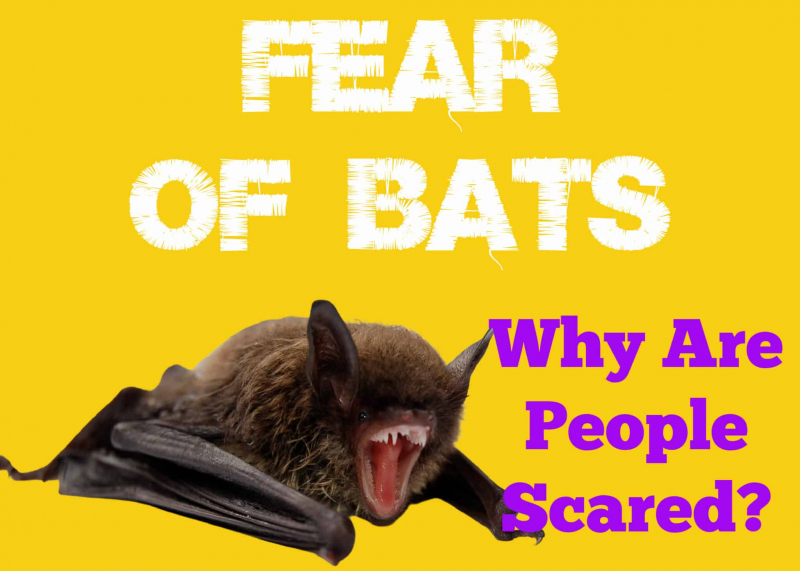
squirrelsatthefeeder.com -
The dread of lengthy words is known as sesquipedalophobia. The irony is obvious because the term itself is absurdly lengthy. Sesquipedalophobic people may find it difficult to read articles, books, or even go out in public because they are afraid of seeing an extremely lengthy word printed on a billboard or sign anywhere. In fact, Bryant Oden's well-known humorous song "Hippopotomonstrosesquippedaliophobia" was inspired by this condition.
This is an extremely unusual phobia that is not as widespread as achluphobia (fear of the dark), arachnophobia (fear of spiders), or cynophobia (fear of dogs). Sesquipedalophobic people may find it difficult to go about their daily lives since their phobia causes heightened levels of dread and stress. Despite the fact that they are aware that their condition is unreasonable, they are unable to look or read long sentences without suffering excruciating anxiety. Sesquipedalophobic people may purposefully avoid circumstances in which they will be forced to read lengthy words. As a result, they may make certain that their day job needs little to no reading or writing. Such symptoms, however, will vary widely from person to person.
Sesquipedalophobic people may have a tough time going about their daily lives since they are attempting to avoid lengthy words. They may refuse to read restaurant menus, billboards, signs, or other kinds of literature in order to "shield" themselves from the discomfort caused by long words. Avoidance will most likely be utilized frequently, as they may make purposeful decisions not to read things or to look away when and if they are in the presence of some form of material. When confronted with a long word, someone suffering from sesquipedalophobia is likely to experience intense worry and tension. Their bodies may go through physiological changes such as increased heart rate, elevated body temperature, muscular tension, parched mouth, shivering, and so on. In essence, their body may respond as if they were in the midst of a genuine threat.
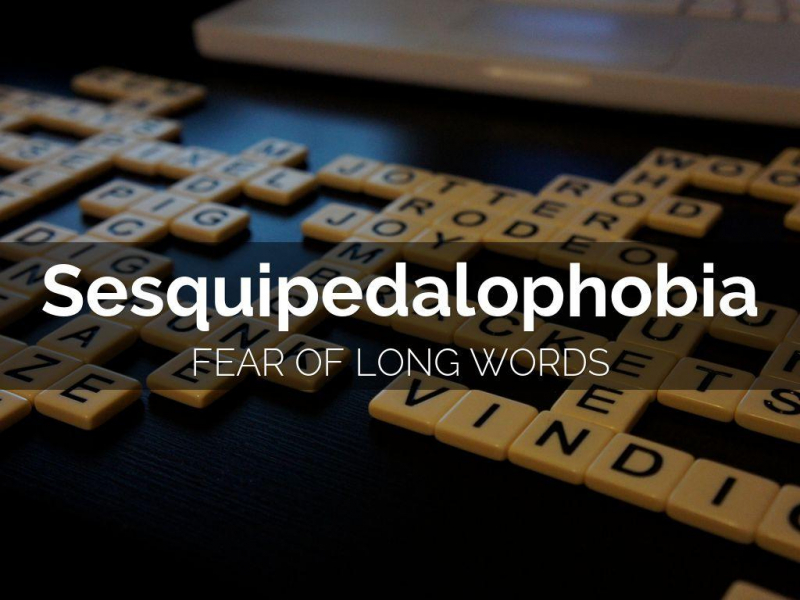
optimistminds.com 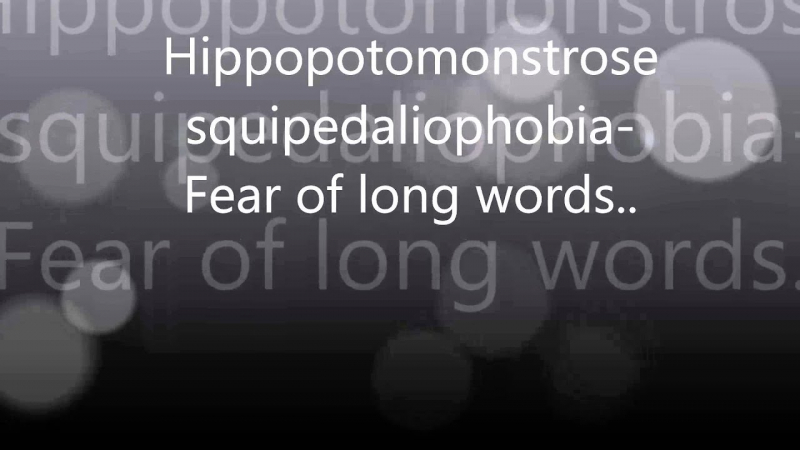
Hippopotomonstrosesquipedaliophobia Fear of long words - YouTube -
Porphyrophobia is a strong aversion to the color purple. It is a kind of chromophobia, or fear of colors. Porphyrophobia can cause intense anxiety when people view or think about purple in any form, or it can be a reaction to specific colors of purple. They perceive the color to be dangerous.
Porphyrophobia, like other phobias, may have a significant impact on your mental health. Because it's impossible to foresee when and where you'll see purple, the condition can make it difficult to operate in daily life. Panic attacks can result from porphyrophobia.
Porphyrophobia, like other phobias, typically has no known etiology. Some individuals are afraid of the ideas or things that purple signifies. You may be afraid of strong individuals, or you may be concerned about enigmatic or unknown concepts such as magic or mysticism. Having phobias, anxiety disorders, or other mental health diseases in your family might increase your chances of developing a comparable disorder. You may link the color purple with violence, anguish, or danger if you watched or experienced a catastrophic accident or sad incident in which the color purple was present.
People suffering with porphyrophobia may avoid any circumstance in which they may come into contact with the color purple. They may refuse to enter establishments with purple signage or avoid the produce section at supermarkets to avoid seeing eggplants or plums. They may even avoid parks or gardens to avoid viewing purple flowers like lavender or violets.

eBaum's World 
Fine Art America -
Globophobia is a fear of balloons that is intense, overpowering, and illogical. The concept, sight, sound, touch, and smell of balloons can cause acute dread, anxiety, or panic. Some people, however, merely have a fear of balloons exploding or, more particularly, the sound of a balloon popping. Some persons with globophobia are afraid of all of these balloons, while others are afraid of a single variety of balloon. Some persons with globophobia, for example, are not terrified of foil balloons since they are less prone to explode, whilst others are just afraid of inflated balloons.
Balloon phobia is most frequent in young children, with many growing out of it before puberty. However, instead of growing out of their fear, some individuals's globophobia symptoms develop with time, with some people having a phobia of balloons their whole lives. Globophobia can arise in adults as well. Although many individuals detest the sound of a balloon bursting, particularly when it occurs abruptly, this does not always indicate that you have a phobia. A person suffering from globophobia may also be afraid of balloons, even if there is no real danger to them if they are not in close proximity to them.
Because a person with globophobia is likely to suffer strong and overwhelming fear, anxiety, or panic when they come into contact with balloons, they may engage in avoidance behaviors to assist them avoid balloons or locations or circumstances where they could come into contact with balloons. They may, for example, avoid birthday parties and other festivities such as anniversaries, and they may refuse to visit areas popular with children if balloons or balloon animals are present, such as family-friendly restaurants, fairgrounds, and farms.
Avoidance behaviors can have a detrimental influence on your social life, relationships, and capacity to complete daily responsibilities. Avoidance behaviors frequently have a paradoxical impact, which means that while a globophobic individual uses avoidance behaviors to assist them manage or minimize their fear, they actually reinforce the phobia and, in many circumstances, result in more severe symptoms in the future.

egasalampessy.blogspot.com 
mykidstime.com -
The excessive dread of bathing, cleaning, or washing is known as ablutophobia. It is a type of anxiety illness classified as a particular phobia. Specific phobias are unreasonable worries that are focused on a specific scenario. They may cause havoc in your life. Specific phobias afflict an estimated 19.2 million individuals in the United States, according to Trusted Source. Specific phobias have similar symptoms, causes, and treatments. Women and children are more prone to ablutophobia than males.
The symptoms of ablutophobia are similar to those of other particular phobias. When bathing or washing, symptoms may appear. They can also happen just by thinking about them. Among the symptoms are:
- intense fear or anxiety that increases the closer you get to the situation
- panic attacks
- knowing that your fear is irrational but unable to stop it
- avoidance of bathing or washing to avoid the fear and anxiety
- the fear interfering with your daily life
- sweating
- rapid heartbeat
- difficulty breathing
- in children, clinging, crying, or tantrums
Consult your health care physician if you suspect you have ablutophobia. Your doctor will be able to tell you whether you have a physical injury or sickness that is causing your ablutophobia. If your doctor concludes that you have an anxiety condition, he or she will refer you to a mental health specialist. A clinical interview will be conducted by the mental health expert. They will inquire about your medical and psychological history, as well as your social and familial background. They will employ diagnostic criteria to reach a final diagnosis during this interview.

Verywell Mind 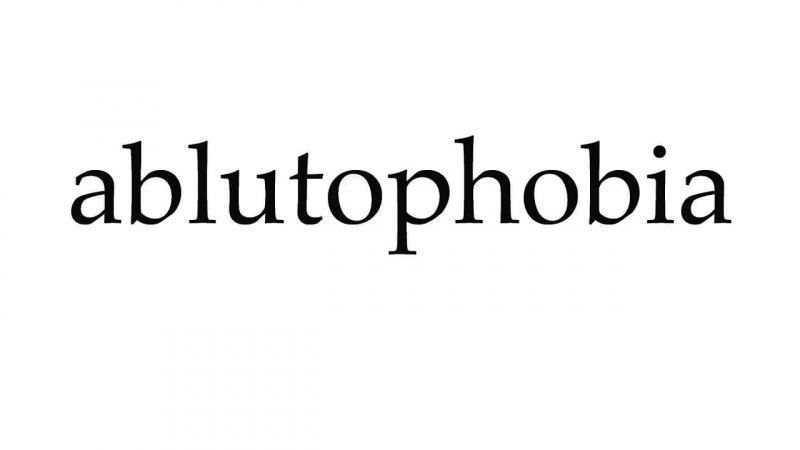
Verywell Mind -
The dread of being without your cell phone is known as nomophobia. Nomophobic people are extremely anxious about not having their phone with them, having a low battery, or having their phone go out of service. People with nomophobia get scared and have acute anxiety symptoms when they are unable to use their phone, regardless of the circumstances.
This uncommon fear is frequently the result of a cell phone addiction. People suffering from this phobia may check their phones incessantly throughout the day, fearing they may miss out on communication with loved ones. While nomophobia is considered an uncommon phobia, mobile phone addiction appears to be rather frequent. According to recent studies, over half of both men and women are anxious about their cell phones. According to one survey, 23% of male students were identified as nomophobic, and nearly 77% checked their cell phones more than 35 times each day. A group in Italy has proposed that nomophobia be classified as a separate phobia.
Cognitive behavioral therapy appears to be successful by rewarding autonomous behavior independent of technology factors; nevertheless, randomized trials are lacking for this type of treatment. Another treatment option is "Reality Approach", or Reality therapy, which asks patients to redirect their actions away from cell phones. Neuropsychopharmacology, ranging from benzodiazepines to antidepressants at standard dosages, may be beneficial in extreme or severe conditions. Tranylcypromine and clonazepam were also used successfully to treat patients. It is crucial to remember, however, that these drugs were developed to treat social anxiety disorder rather than nomophobia. Nomophobia may be difficult to treat directly, but it is more likely to explore, diagnose, and treat any underlying mental illnesses, if any exist.
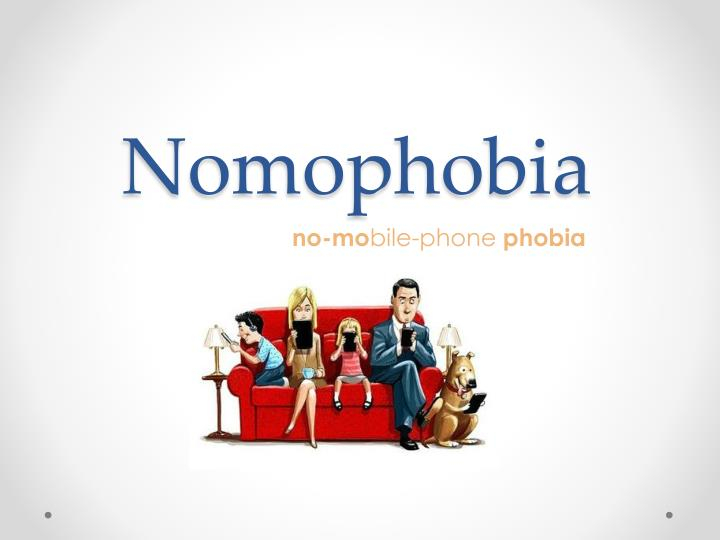
SlideServe 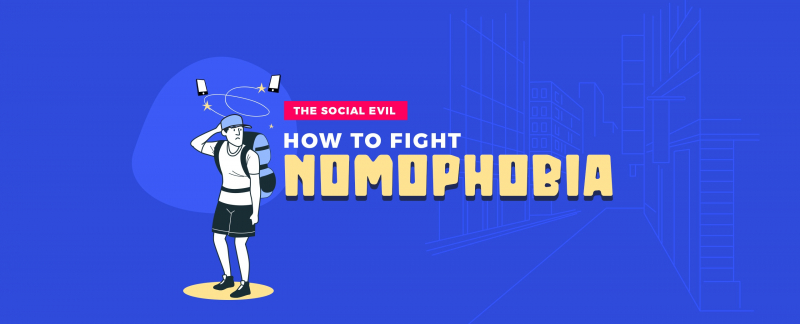
insync.co.in -
Arithmophobia is a severe aversion to numbers. People may be terrified of all numbers or merely a subset of them. Arithmophobia is also known as numerophobia. Arithmophobia is not a disease included in the Diagnostic and Statistical Manual of Mental Disorders published by the American Psychiatric Association (DSM-5). However, some individuals still regard it as a distinct fear. People who fear numbers, like those who have other specialized phobias, are typically aware that their fear is unjustified. Even yet, some people may struggle to control or manage their arithmophobia symptoms.
There isn't always an obvious reason of arithmophobia. The following factors may lead to the development of arithmophobia:
- Genetics, with the risk increasing if you have an anxious parent or other family member.
- Other mental health illnesses include generalized anxiety disorder and depression (GAD).
- Negative numbers-related traumas or traumata, such as being reprimanded or harassed for not performing well in arithmetic class.
The primary symptom of arithmophobia is intense anxiety when confronted with numbers. People may become anxious when they think about any number, or the dread may be associated with only a few numbers. Your healthcare provider may ask you questions to determine if you have a phobia of numbers. Sometimes, physical symptoms may relate to a different mental health condition.
Exposure therapy is frequently used as the initial treatment. Most persons who use exposure treatment as instructed find a reduction in their symptoms. The process of gradually dealing with a specific phobia is known as exposure treatment. You may visualize yourself performing numerical activities, gradually progressing to performing the tasks in real life. Speaking with a therapist is part of cognitive behavioral therapy (CBT). You learn to recognize which of your thoughts are harmful or false. CBT teaches you how to retrain your brain to think in sensible ways.
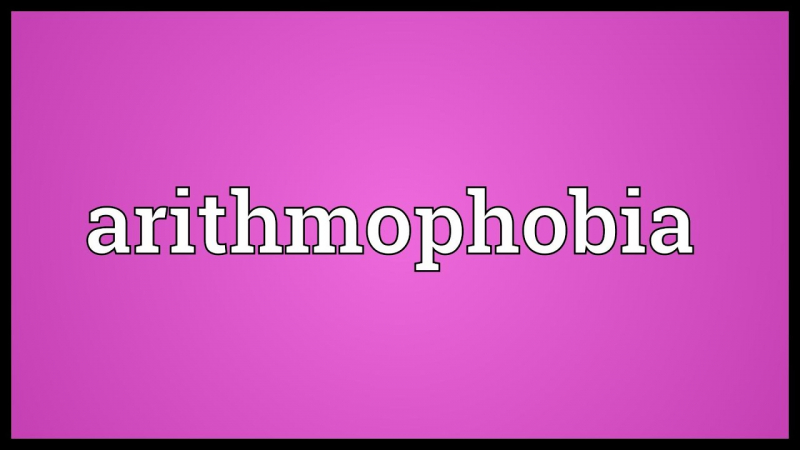
americamagazine.org 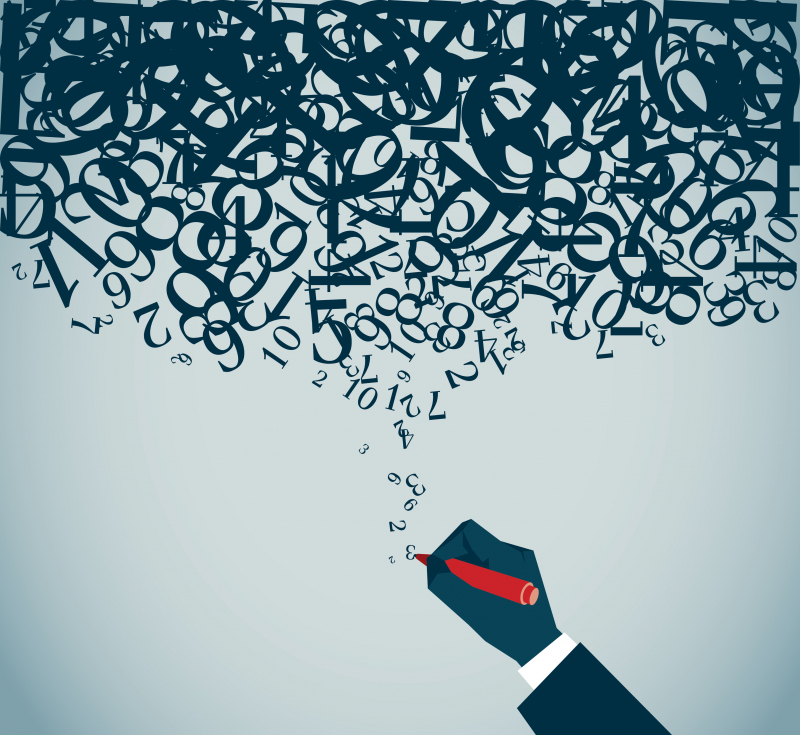
americamagazine.org -
Plutophobia is defined as an unreasonable dread of riches. Someone suffering from this phobia may be scared of those who are affluent and powerful. They may also be terrified of becoming affluent themselves. Though most individuals would certainly not mind being wealthy, some people are actually terrified of it. As a result, someone suffering from plutophobia may purposefully damage their professional prospects by putting in subpar efforts every day to guarantee they never become affluent.
Their dread of being affluent may stem from anticipating a slew of prospective duties, demands, and concerns that would only be exacerbated by a significant rise in money. They may be afraid that if they become affluent, they will be taken advantage of by others, or that family members would put financial pressure on them by giving them significant quantities of money out of guilt.
Their plutophobia may also be a result of their own paranoia or negative perspective of other people's motives, since they may be afraid of being robbed, followed, or chased by someone who envies their money. Though thieves exist, limiting your own potential to "protect yourself" from being robbed one day or being pushed to pay a buddy thousands of dollars is not sensible and may be an indication of plutophobia. Fear of affluent people is another significant barrier that folks suffering from plutophobia confront. Very wealthy people have a reputation for being "crooked", "greedy", or "untrustworthy". Such unpleasant descriptors may contribute to plutophobia. Some people's dread of affluent individuals might be the result of an evolutionary subconscious perception. This makes sense when we consider how strong individuals (e.g., monarchs, tyrants, etc.) have exploited their riches and resources to oppress their people throughout history.
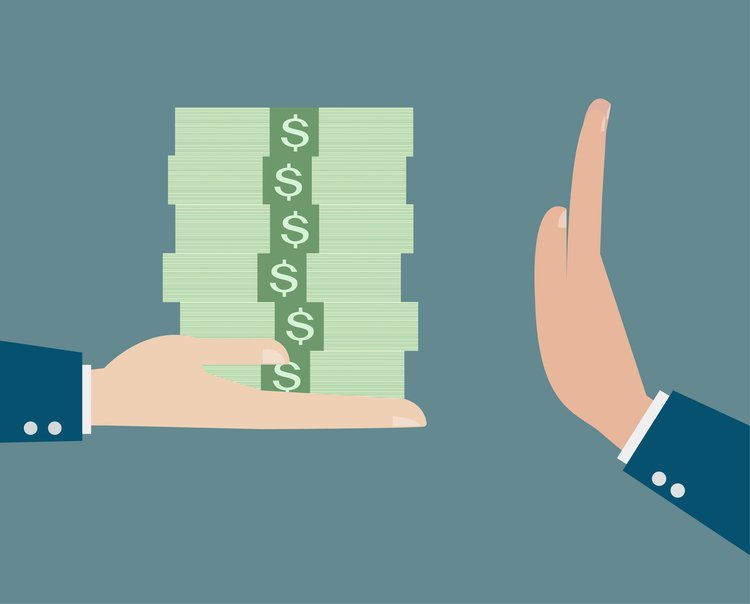
starbiz.com 
health.kapook.com -
The unreasonable dread of the color yellow is known as xanthophobia. Someone suffering with this illness might anticipate to feel extremely anxious by thinking about the color yellow, let alone seeing it in real life. In fact, their worry may be so acute that they experience a full-fledged panic attack as a result. Although such an increase in anxiety may not always be the case for everyone suffering with xanthophobia, it is nevertheless extremely possible.
A full-fledged panic attack caused by xanthophobia can cause an elevated heart rate, increased pace of breathing, higher blood pressure, muscular tension, shaking, and profuse perspiration, among other symptoms. Although panic attacks are not always the case for everyone having xanthophobia symptoms, they are nonetheless conceivable, especially if their symptoms are severe. Someone suffering from xanthophobia may avoid what they are afraid of. They may take this to its logical conclusion by ensuring that they are not exposed to the color yellow in any way.
Although someone with this illness may deliberately avoid their fear in an attempt to lower their odds of experiencing any acute anxiety, doing so may increase their xanthophobia symptoms in the long run since they are also justifying their dread to themselves by actively avoiding it.
Anxiety is the most common symptom of xanthophobia, as it is with practically every other phobia. Furthermore, as previously said, their anxiety may be so intense that individuals experience full-fledged panic attacks as a result of it. Depending on the intensity of their panic attack, they may require hospitalization. However, this will differ from person to person and will be determined by a variety of circumstances.
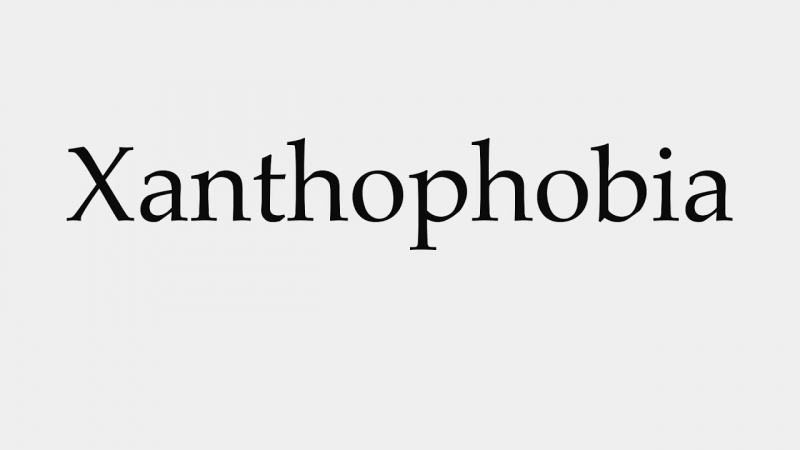
YouTube>Pronunciation Guide 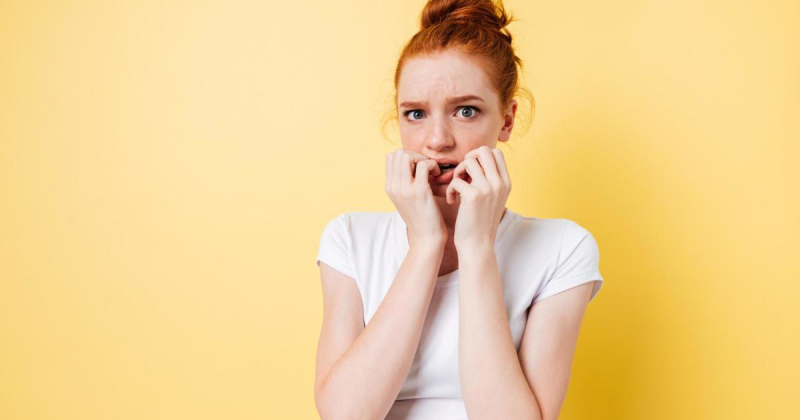
findatopdoc.com -
When you have a particular phobia (a sort of anxiety disorder), you are afraid of something that will not damage you. Octophobia is a strong aversion to the number eight. Because numbers are always around us, octophobia can cause severe stress and even bodily problems. A person suffering with octophobia may recognize that their fear is unreasonable, yet they are unable to control it. It may disrupt personal relationships, employment commitments, or daily chores (for example, paying bills and knowing what time it is).
Specific phobias, such as octophobia, remain unknown to medical professionals. However, they believe it is frequently caused by a mix of:
- Genetics: People who have a family history of anxiety and particular anxieties are more prone to develop phobias.
- Superstitions and cultural significance: Some civilizations have passed down myths and customs involving the number eight. It is frequently associated with power, religion, or gods. The number 8 indicates the number of Wiccan festivals in a year as well as the number of days of Jewish Hanukkah. It is also important in Islam and Hinduism. When the number is turned on its side, it becomes the symbol for infinity.
- Traumatic encounters with the number: Someone who has had a terrible experience with the number 8 may develop octophobia. For example, getting reprimanded or slapped because of a poor math grade, or having a painful encounter in a house with the number 8 in the address.

thehealthy.com 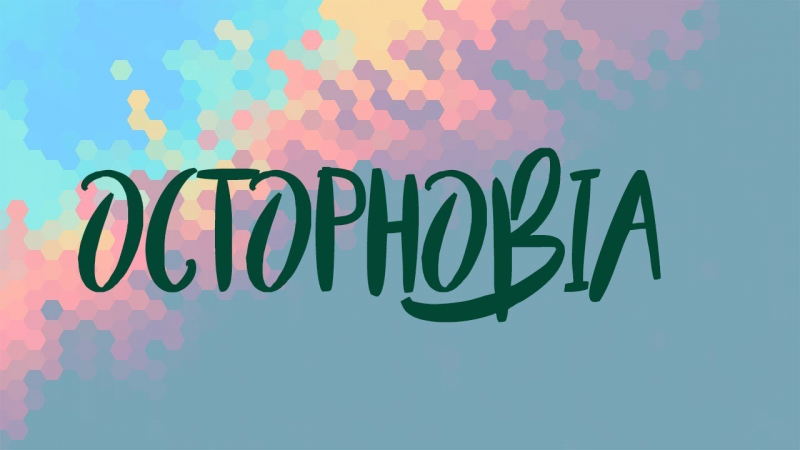
thehealthy.com

















